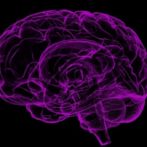Snapshots of Dementia: And Now, the Moment We’ve All Been Waiting For
Photo by Jack Sharp on Unsplash It took us forever to reach this point in mid-September of 2019. In fact, it took not only the visits over three years to neurologists Nos. 1, 2 and 3, but also a 50-plus page questionnaire/application, prayer and what the brain clinic in South Florida said would be a long wait. But only a few days after I submitted the paperwork via certified mail, the clinic called with a sudden cancellation. Could we come in just a few days? You know my answer. As I drove the three-plus hours from Orlando, I prayed this would be that long-awaited moment: The diagnosis that said yes, Tom has dementia. The diagnosis that said yes, it’s FTD (frontotemporal degeneration). The diagnosis that would move him closer to qualifying for disability payments. I decided to travel the distance to neurologist No. 4 because we had reached a stalemate. After two tries, our insurance wouldn’t approve the PET scan neurologist No. 3 said she needed to differentiate between FTD and early-onset Alzheimer’s disease. Already struggling to cover our bills without Tom’s income, I wasn’t about to pay the estimated $5,000 cash for the scan. So I decided to visit one more neurologist—this time, one recommended by the Association for Frontotemporal Degeneration. I hadn’t known to check their list earlier because, until neurologist No. 3, I hadn’t known about FTD. After a slight GPS-induced detour, we arrived for our longest neurology visit to date. I found the team: — Thorough: The group, which included a dietician, physical therapist, nurse practitioner and social worker, met with Tom and me individually and collectively. The exam included neuropsychological testing as well. — Knowledgeable: I knew more about FTD now than I ever had, but this team knew more. That might seem obvious, but it had not proven true with doctors prior to neurologist No. 3. —Caring: This was the first appointment where anyone expressed concern for my mental and emotional health. Just having someone express empathy for our journey meant a lot. The team members were more empathetic than the doctor, who seemed distant, even rude, but I happily accepted knowledge over hand-patting, especially when receiving the latter from anyone came as a surprise. After all the exams and discussions, the entire team met with both of us to give us what they’d promised at the start of our appointment: A diagnosis. In brief, here’s what they said: 1. Tom definitely has dementia. He shows marked impairment in several tested areas, in memory but also in logical sequencing and other elements associated with executive function. His 2019 MRI also shows marked shrinkage from the 2017 one, particularly in the frontal area of...
Read More








